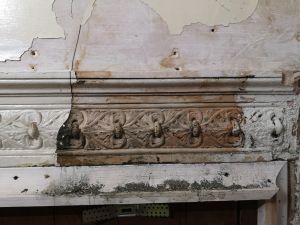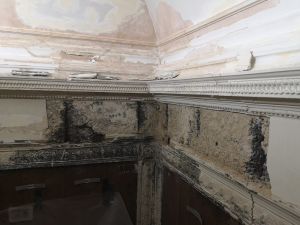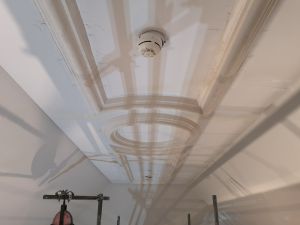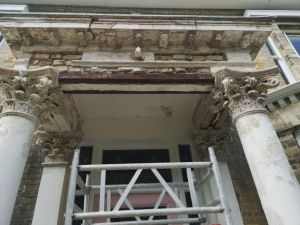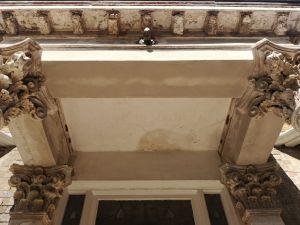Conservation & Consulting
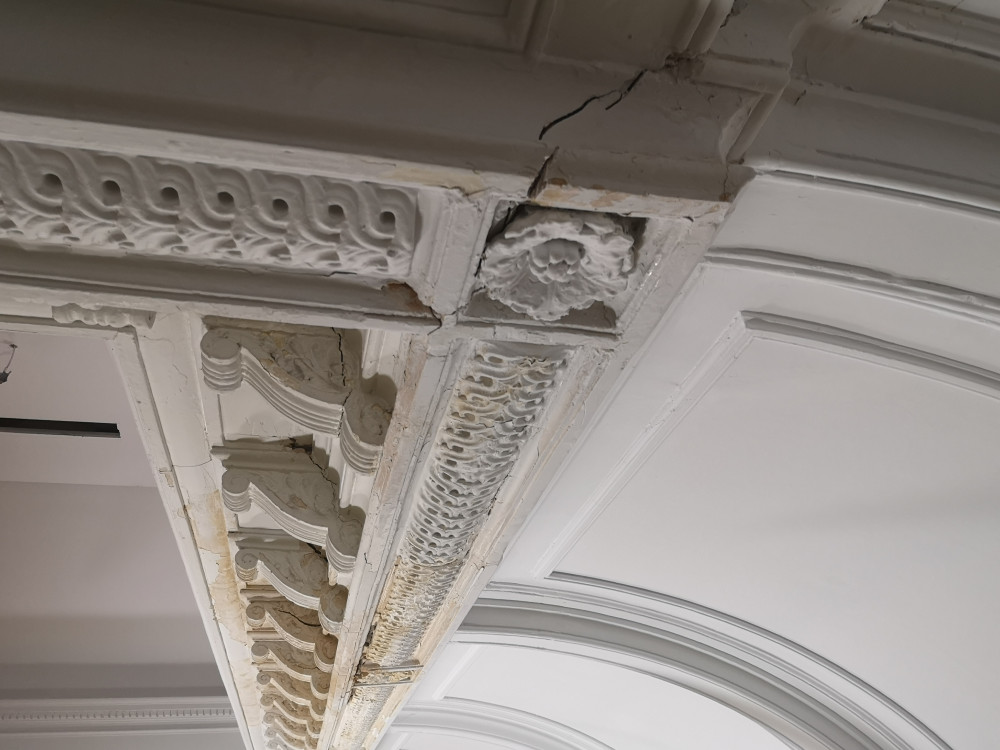
With broad experience in conserving churches, palaces, museums and private homes, we are happy to recieve similarily broad enquiries where plaster is in need of conservation or repair.
Consulting on refurbishment of heritage buildings
When it comes to planning the refurbishment of historic buildings, we recommend a site visit to aid in the scheduling of work and assessment of the current state of the plasterwork. Much damage can be prevented through gentle or rigorous protection of the existing plaster. There is, however, often inevitable and, at times, essential damage to the plasterwork when major works are being carried out. In a prior consultation, strategies and tips can be drawn up to protect plasterwork and keep the cost of repairs down. For example, when plaster cornice is to be checked for asbestos a well sized sample must be taken, however, it is far easier and cheaper to repair a section in the centre of a long straight run than in a corner. If a feature is going to be lost, for example a ceiling rose is going to be over boarded, an accurate copy can be made if there is access to the original, preferable in situ, or the original can be delicately removed and reinstalled. If this inspection is done at the beginning of the works, the original methods and materials used can be identified and the method matched. This gives a finished piece which is in keeping with the room and nature of the original. Silicone squeeze moulds can also be taken of original features and can be cast and drying off site in time for when your project is reading for the replastering to take place.
Many older houses opting to add internal insulation on their walls are losing their cornice in the process. We can recreate cornice which matches your original exactly, saving you from buying a poorly matched piece that’s available off the shelf.
Conservation of built heritage
An assessment of existing plasterwork’s structural integrity, historic significance and material analysis should be carried out by a specialist heritage plasterer. This can help to identify problem areas, whether it’s water damage, delamination, poorly spaced weak lath and give a sense of whether they are major or minor defects. It is common to see historic houses being entirely reskimmed in gypsum when a few localised seamless lime repairs would have sufficed saving time, money and the breathability of the building. We are realistic in identifying when conserving plasterwork is the best way forward.
Planning a project
In the inital discussion we will highlight key factors surrounding access, and required conditions. For example, lime plastering should not be carried out when there is a risk of frost for a couple of months after the work is complete as there is a risk of damage if the moisture in the plaster freezes whilst curing. Unlike gypsum, lime takes months to set fully and should only be sensitively sped along its way by an experienced plasterer. This has implications for the decorators as they will not be able to paint on fresh plaster. Lime plaster is also damaged and likely to perish if dried out too quickly. It is therefore very beneficial for a primary contractor to have an assessment and list of recommendations to hand when scheduling start dates for following trades, such as decorators. Lime plaster is not a product most professionals managing jobs have an in-depth understanding of.
Whatever status your building is we can draw on repair techniques used on grade I listed buildings and modest barns alike.
We are happy to consult on jobs prior to putting work out to tender.
